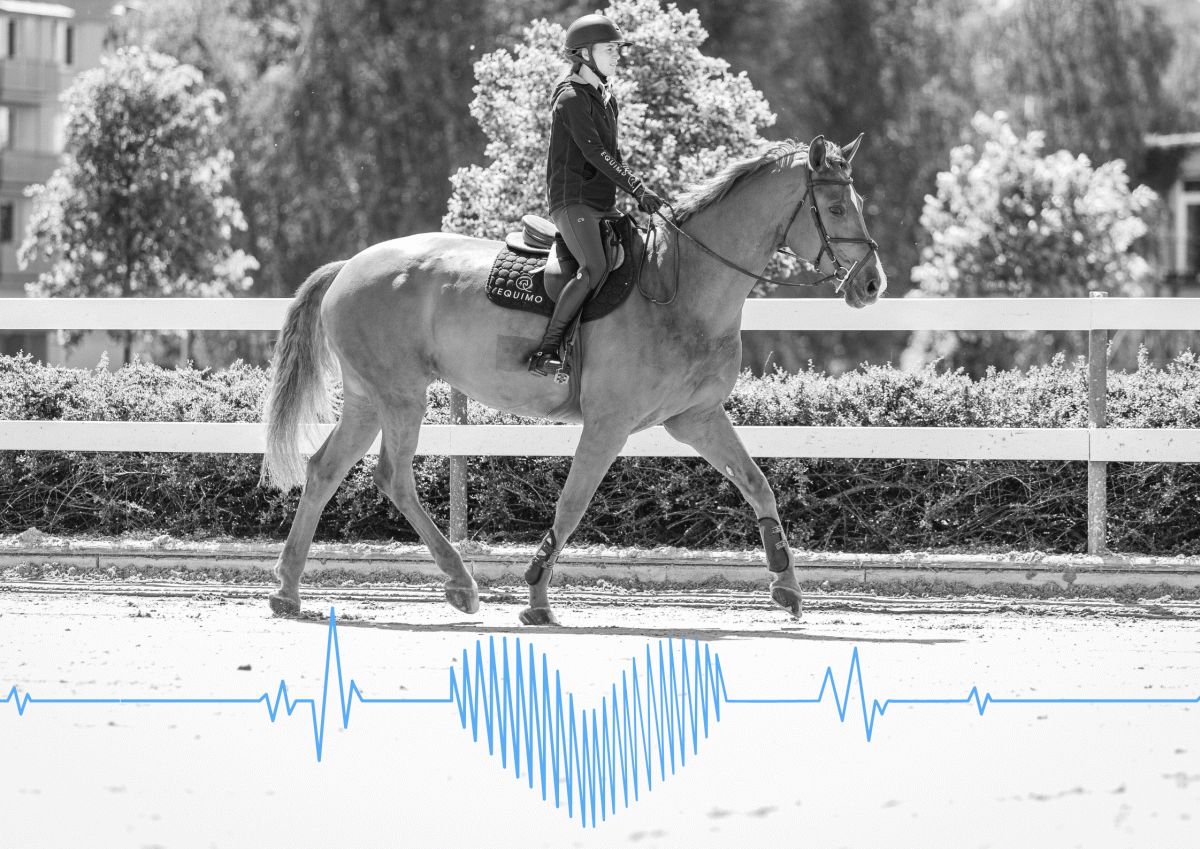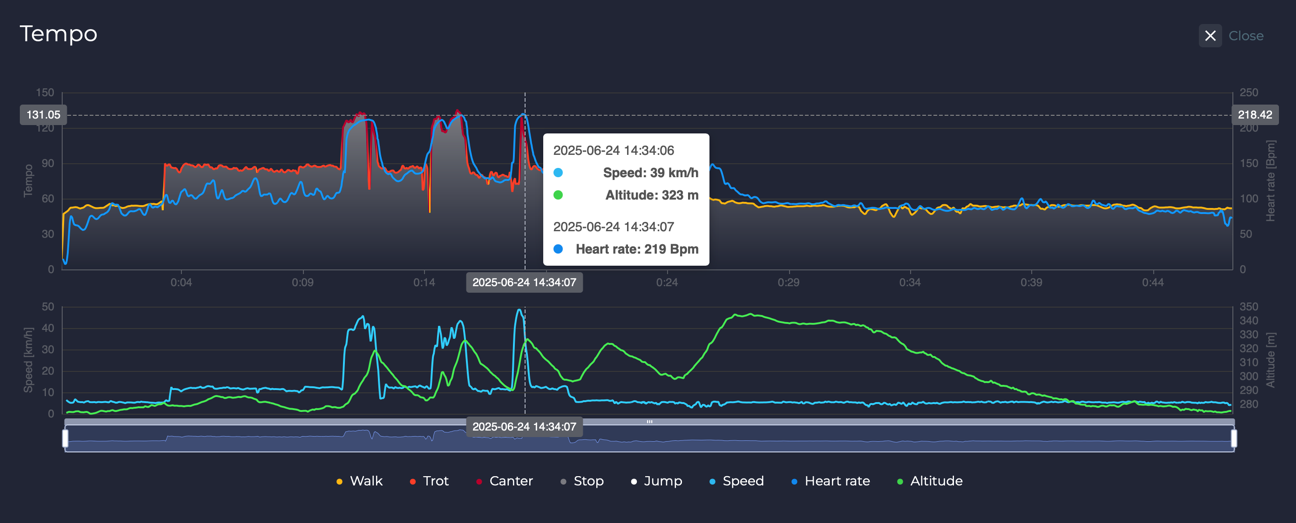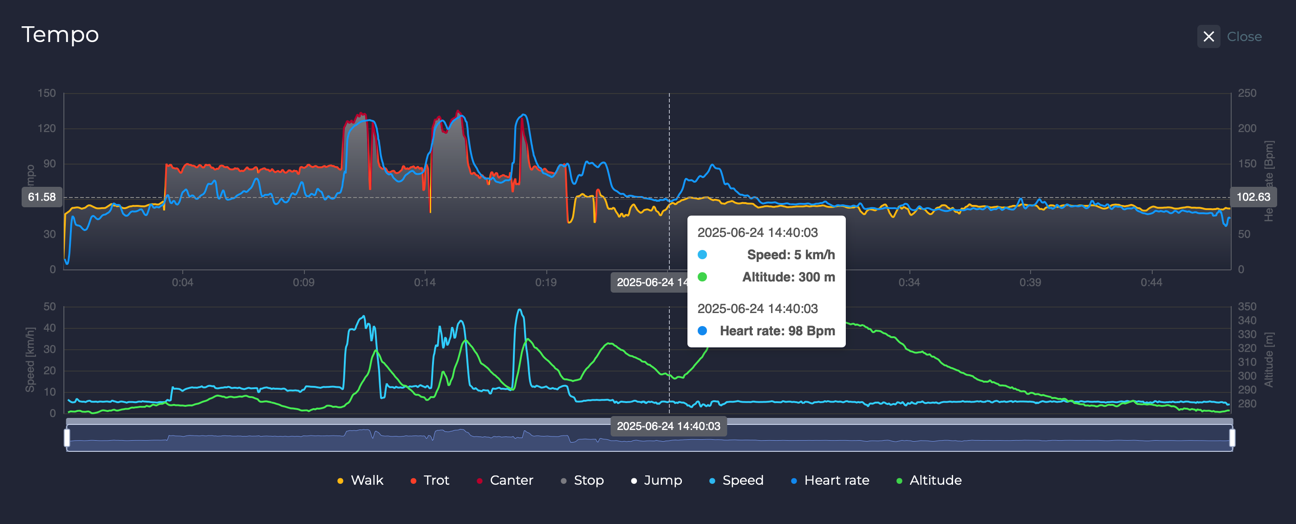
Your horse’s heart is more than just a muscle — it’s the core of their strength, stamina, and recovery.
For riders, trainers, and stable managers, understanding how the equine heart responds to work is key to sustainable performance and long-term well-being.
Heart rate isn’t just a number on a monitor — it’s the story of how your horse feels, adapts, and recovers.
Here are three fascinating facts about your horse’s heart that every equestrian team should know.
While the average human resting heart rate sits between 60 and 100 beats per minute (bpm), a horse’s normal range is typically 28–44 bpm.
This slower rhythm is what makes the equine heart so efficient — but it also means that even small fluctuations can reveal a lot.
A few extra beats could signal fatigue after a demanding training cycle, early signs of stress, or the onset of a health issue.
Monitoring this baseline regularly helps you catch changes early, so you can adapt training plans before problems arise.
Every challenge a horse experiences — intense training, long transport, competition excitement, or even subtle changes in weather or environment — can show up in the heart rate.
When these spikes become patterns, they tell us something important: the horse may be under too much pressure.
By tracking heart rate data consistently, teams can recognize these stress responses and adjust workload, recovery, and rest days to keep each horse performing safely and confidently.
It’s not about pushing harder — it’s about training smarter.
A horse’s heart doesn’t only tell its tale during exercise — it’s what happens afterward that truly counts.
A well-conditioned horse’s heart will return to normal within a few minutes after work, while slower recovery times can point to fatigue, overtraining, or simply the need for more gradual conditioning.
For stables managing multiple horses, this insight is invaluable. Heart rate recovery trends help trainers and managers see which horses are thriving and which might need a lighter approach.
It turns guesswork into a measurable, data-driven process.


Every horse is unique — and so is their heartbeat. EQUIMO turns that data into clear, actionable insight that helps your whole team stay aligned.
With EQUIMO, you can:
Track heart data for every horse during and after training
Compare recovery trends across the entire team
Detect early warning signs before they become setbacks
Align trainers, riders, and grooms with one shared overview
Because when every heartbeat is visible, your stable can make smarter, safer, and more confident decisions.